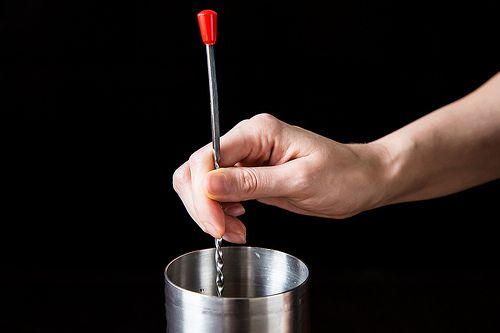
On our new weekly podcast, two friends separated by the Atlantic take questions and compare notes on everything from charcuterie trends to scone etiquette.
Listen NowPopular on Food52
Continue After Advertisement
15 Comments
Tripp5630
November 1, 2024
I believe I am a bit old school. Gordon’s is by far my preferred spirit. I alternate every few days for my nightly martini, between a twist and an olive. I pour my gin in a crystal mixing glass filled with ice, take my 10 year old empty bottle of vermouth, pass over the glass 3 times and nod curtly in the general direction of France. I stir (James was wrong; so very, very wrong) and gently strain into a very old, complementary Bombay gin martini glass.
Patriciac1937
October 16, 2022
Bombay London Dry Gin, dash Dolin Dry Vermouth with a lemon twist, up, of course.
Tripp5630
July 6, 2022
I am an unabashedly voracious martini fanatic. At the time of this musing, I’m enjoying a vodka Gibson, three spoons dirty, my second this evening. However, I fear the origins of this “elixir of quietude”, as E.B. White so elegantly proclaimed it, and its multitude of delightful incarnations, to be forever lost in the vapors of time. The how and the why are now irrelevant, as is the identity of the brilliant barista who concocted it. One can now only tilt a cocktail flute in the general direction of France, nod agreeably, and pensively sip the past away, content in the knowledge that at least for a short time, someone, somewhere, had the good grace and manners to invent the very definition of a gentleman, the veritable monarch of libations, the Martini. Stirred, not shaken.
TI F.
January 8, 2022
Love love love the wordsmithing in this article, especially the opening paragraph. I heard the voice of the late Anthony Bourdain when reading it. That laid back expression, words just dancing and forming images in your mind.
Cocktail history is so interesting, especially classics like the Martini. I must admit to being guilty of mixing the Martini up a bit, but would never just add the suffix Tini to a name. Ugh.
For my classic martini, I believe that ice should merely be shown the vermouth and then discarded. So I add a measure of good quality vermouth to ice in a cocktail shaker and then drain. The ice is merely left with the whisper of a kiss of vermouth. To that I add a couple of measures of London Dry Gin and stir. Never shaken. And I'm definitely an olive girl.
Cocktail history is so interesting, especially classics like the Martini. I must admit to being guilty of mixing the Martini up a bit, but would never just add the suffix Tini to a name. Ugh.
For my classic martini, I believe that ice should merely be shown the vermouth and then discarded. So I add a measure of good quality vermouth to ice in a cocktail shaker and then drain. The ice is merely left with the whisper of a kiss of vermouth. To that I add a couple of measures of London Dry Gin and stir. Never shaken. And I'm definitely an olive girl.
Randy W.
September 1, 2020
If I'm at home, and not entertaining guests, I omit the olives. For my gin martini, I go with a lot of ice, 2 oz. of gin, 2 shakes of orange bitters, and 3/4 oz. of vermouth. Stir for 30 seconds, and strain into a martini type glass. Mmmm, yummy...
Pure L.
April 8, 2020
Great article! Love the additional background on the subject of Martinez vs. San Francisco origins (have had heated debates with folks here on the subject). We love a traditional gin martini but have been recently been exploring the "flavored" varieties too. Our current favorite is an espresso martini - Grey Goose vodka, Kahlua and a shot of espresso. Simple yet satisfying.
Jake
September 24, 2018
Some will say the term “dry martini” actually comes from the original martini containing sweet vermouth and people’s preference waiting towards a martini made with dry vermouth rather than how much vermouth is in the specs of the cocktail.
Percy
March 29, 2017
Just now came to this article while doing research for a web series I'm working on. So forgive me for being late to the party. But my personal favorite martini is one of my own invention. Equal parts Brokers gin and Stoli black, stirred in the glass with three drops of olive juice while facing in the general direction of france. Garnish with an olive and call it a day. All that being said, Ive never met a martini I didn't like.
CPD
February 17, 2016
4 parts Tanqueray 10, 1 part Lillet, 2 cocktail onions, served over rocks = the Perfect Gibson.
dymnyno
May 16, 2014
A Martini is my summer staple. In the Napa Valley, we love them made with local gin maker, Leslie Rudd's "209" and Vya dry vermouth. One of my own house cured olives finishes the cocktail. (straight up, of course)




See what other Food52 readers are saying.